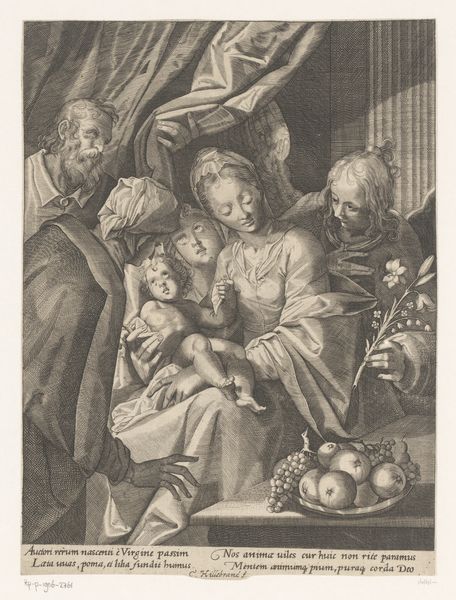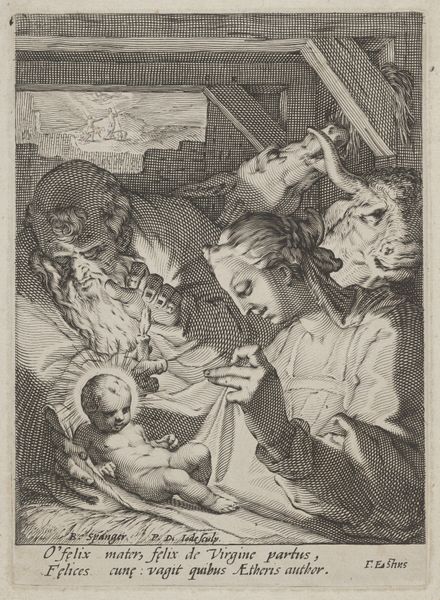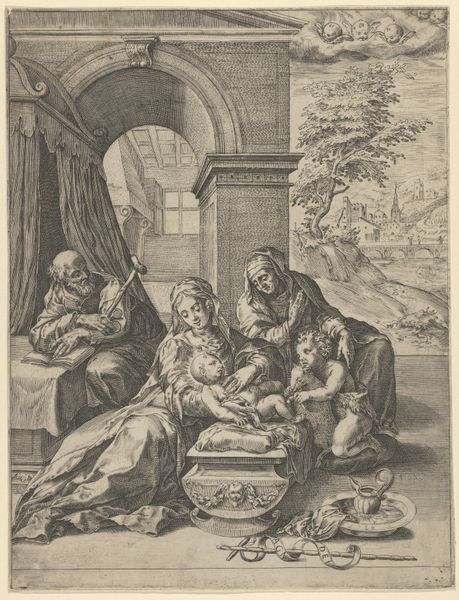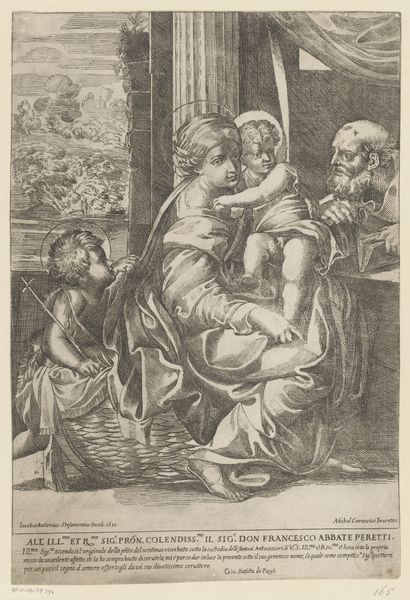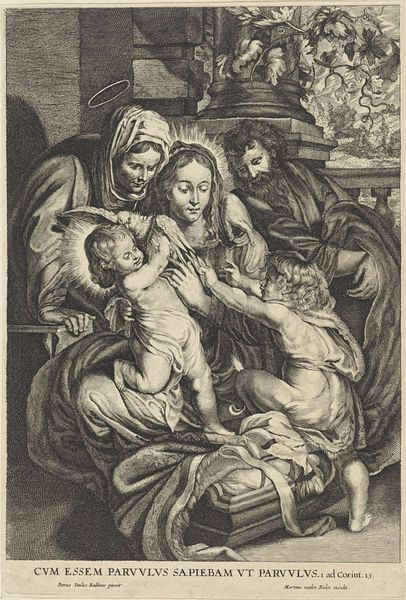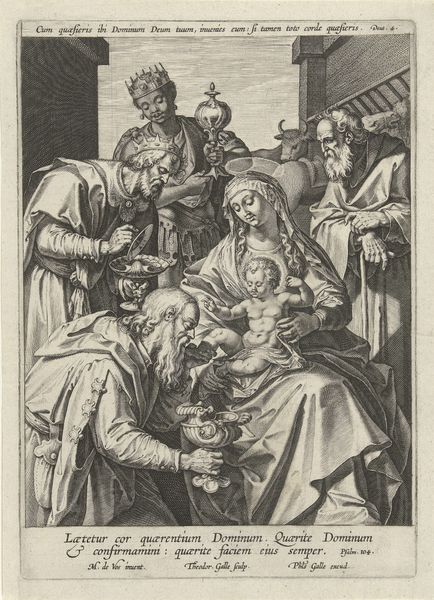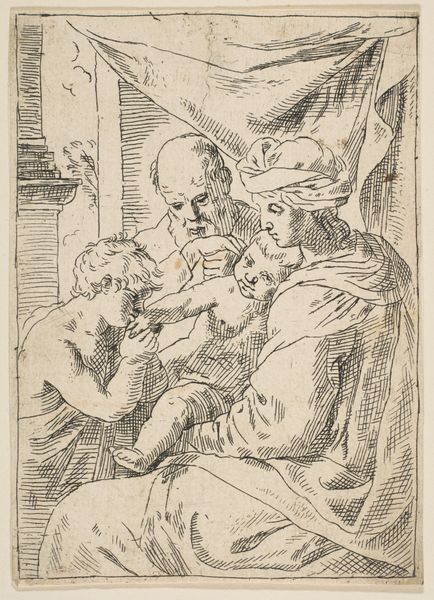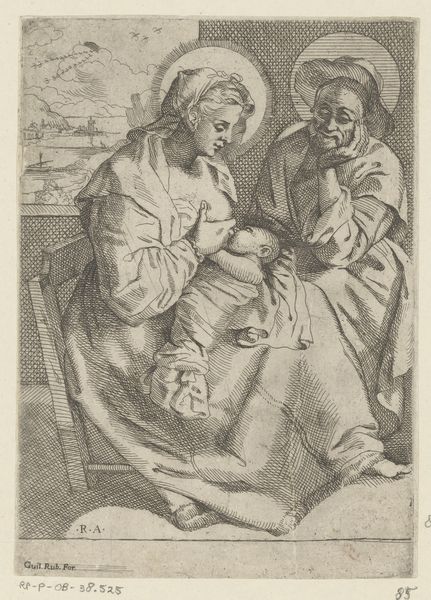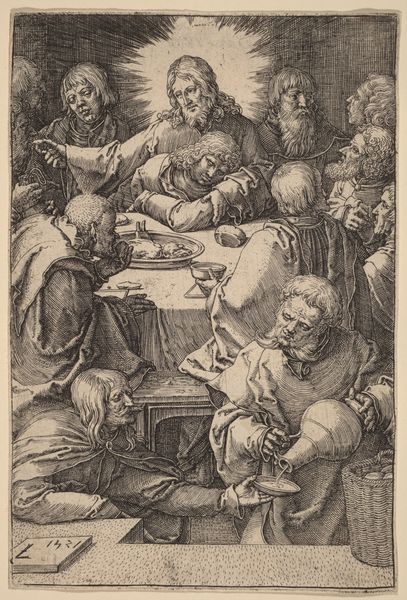
drawing, print, engraving
#
drawing
#
narrative-art
#
baroque
# print
#
figuration
#
engraving
Dimensions: sheet: 8 7/8 x 6 1/8 in. (22.6 x 15.6 cm)
Copyright: Public Domain
Curator: Immediately, the theatrical lighting strikes me. Like a stage set, only here the action centers on a child. Editor: It is a drawing, or rather an engraving. This is The Adoration of the Shepherds. The piece you are viewing is attributed to Abraham Blooteling. Curator: A print gives a mechanical feel… Does it speak? What happens in a form repeated like the words from a printing press? Editor: A central theme revolves around human embodiment—specifically that of divinity—and this appears achieved here by arranging the composition of light, figure, and inscription, all pointing to one figure: the child. Curator: Absolutely. Note how everyone is illuminated. The gaze, directed into that single source of illumination: all of these form radiating structural spokes. Editor: It’s Baroque—you feel it in the shadows, which make you believe there's some secret at the back. It feels less real; less material somehow than paint. I feel like the figures emerge as apparitions; so fleeting! Curator: We see a focus not so much on spatial depth but instead a sophisticated surface arrangement of tonal value, creating depth through strategic placement and chiaroscuro effects. What the figures themselves perform only reinforces what we have noted compositionally: unity around a key value. Editor: Something does give it energy and the feeling that there might be something alive, something hidden. But, for me, the drawing makes the image artificial and creates some remove between the event depicted and the observer. What do you think it means? Is there meaning or purpose? Curator: The poem itself, literally scripted, in the very fiber of the piece and supporting it... the artist’s purpose? “The word which creates everything, so is born. A pure maiden has birthed a mortal God.” Here one sees the inscription literally serving, in its materiality, the theme to which it directs one's attention. Editor: So, from your standpoint, a convergence. The meaning resides not in representation but, actually, in an entire composition that gives symbolic direction to what is represented. A convergence of the thing, meaning, and observer? The thing itself and what happens. In sum: "drawing attention to the thing which it claims"? Curator: Precisely. Form begetting its own content. Editor: In the end, what grabs me the most is that subtle play of darkness, reminding me there's so much more to the story and something just beyond sight. I will need more time... to wonder about what has no surface or readily accessible depth, hidden and brought to light with this drawing.
Comments
No comments
Be the first to comment and join the conversation on the ultimate creative platform.
